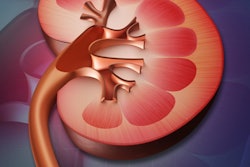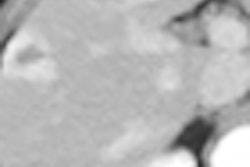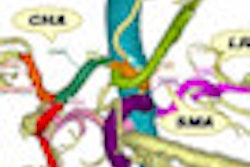Children admitted to U.S. pediatric hospitals with symptoms of urolithiasis are more likely to have a CT scan ordered than an ultrasound exam, even though the latter is the recommended initial procedure, according an article in the October issue of the Journal of Urology.
Between 1999 and 2008, orders for CT scans increased from 26% to 45% for children suspected of having stones in their urinary tract. But the likelihood of having a CT scan and/or surgery depended more upon the hospital where a patient was treated than any other factor, researchers from Children's Hospital Boston reported (Journal of Urology, October 2010, Vol. 184:4, suppl., pp. 1816-1822).
Jonathan Routh, MD, a clinical fellow in the department of urology, and colleagues utilized a decade of data submitted to the Pediatric Health Information System database by 42 U.S. pediatric hospitals to examine trends in the epidemiology of urolithiasis nationwide.
They determined that the number of patients treated at these hospitals increased from a total of 125 in 1999 to 1,389 in 2008, with the mean number of urinary calculi cases per hospital, per year, increasing from 13.9 to 32.6. Compared to total hospital patients, the proportion of children diagnosed with pediatric urolithiasis increased 10.6% per year.
The research team analyzed a total of 13,874 hospital encounters by 7,921 children using bivariate and multivariate logistic regression models. Hospital encounters included inpatient admissions, emergency department visits, outpatient visits, and scheduled surgical procedures.
Eighty percent of the children had a diagnostic imaging exam, a percentage that remained consistent each year. However, CT exam procedures increased by 19% between 1999 and 2008, while conventional x-ray exams decreased from 59% to 38%. The use of ultrasound increased by 7% (from 26% to 33%), and ordering of MRI exams rose from 1.6% to 3.4%.
Of the 3,414 patients representing 43% of the total, 79% had two or more CT exams, and some children had as many as eight CT procedures. The most significant determinant of both CT exam ordering and surgical procedure performance was the treating hospital. Variability in the use of these procedures ranged from 47% to 84% for ordering CT scans and from 24% to 95% for surgery, the authors reported.
The authors acknowledged that the analysis only reflected trends in children's hospitals, rather than community hospitals whose emergency departments treat the majority of children in the U.S. However, the group expressed concern about the lack of consensus in treating pediatric urolithiasis, and how variations among individual hospitals affected patient outcomes, healthcare costs, and the initiative to reduce radiation dose exposure.
By Cynthia E. Keen
AuntMinnie.com staff writer
September 15, 2010
Related Reading
DECT permits more detailed urinary stone analysis, December 4, 2008
Low-dose CT offers first-line exam for suspected urolithiasis, September 15, 2008
Low-dose multidetector CT accurately evaluates urinary stone disease, March 30, 2007
Copyright © 2010 AuntMinnie.com



















